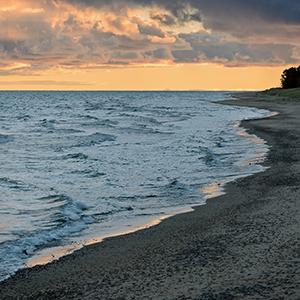The increasing spread of the European barbel in the Italian large lowland rivers is threatening the native species

All claims expressed in this article are solely those of the authors and do not necessarily represent those of their affiliated organizations, or those of the publisher, the editors and the reviewers. Any product that may be evaluated in this article or claim that may be made by its manufacturer is not guaranteed or endorsed by the publisher.
Accepted: 4 September 2023
Authors
Correction in: Erratum: The increasing spread of the European barbel in the Italian large lowland rivers is threatening the native species (https://doi.org/10.4081/jlimnol.2022.2164)
Freshwater ecosystems are heavily altered by human activities, with anthropic introductions of non-native species substantially contributing to their biotic degradation. The invasion by alien species can alter ecosystem balances with direct and indirect impacts across different levels of biotic organization. The number of invasive alien species is particularly high in Mediterranean fresh waters including rivers draining in the northern Adriatic basins. Here, the Padanian barbel Barbus plebejus endemic to the Padano-Venetian district, is threatened by the introduction of the European barbel Barbus barbus via competition and introgressive hybridization. In this study, we genetically characterised using the partial mitochondrial DNA Cytochrome b gene, barbels present in two main tributaries of the Po River, the lower Ticino and Oglio rivers where the two species are suspected to co-occur. Since the two river sections are highly regulated and present severe hydrological alterations caused by dams and other hydraulic structures, the aim of the study was to provide information on the barbel populations composition in these systems to foster the implementation of more suitable management plans aimed at the conservation of the native species. A total of 86 barbel have been analysed (50 in the Ticino River and 36 in the Oglio River) corresponding to 13 haplotypes of which 8 were phylogenetically attributed to B. barbus and five to B. plebejus. The high haplotypic diversity and the unimodal trend evidenced by the mismatch distribution analysis for B. barbus haplotypes support a potential demographic expansion. Altogether, these results highlighted that B. barbus is progressively expanding in northern Italy while posing a serious risk for the conservation of the native B. plebejus, stressing the need to actively focus ecosystem and fisheries management regulations to stop B. barbus from spreading further throughout northern Italy.
Ethics Approval
Angela Boggero, National Research Council, Water Research Institute (CNR-IRSA), Verbania Pallanza, ItalySupporting Agencies
INTERREG Italian-Swiss project “ParchiVerbanoTicino”How to Cite

This work is licensed under a Creative Commons Attribution-NonCommercial 4.0 International License.






